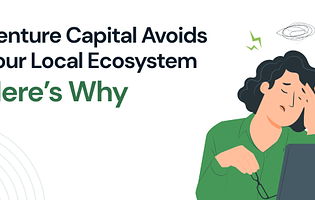Founder Institute Insights
SUBSCRIBE
& JOIN 50,000+
fellow entrepreneurs
- New Content Every Week
- Exclusive Access to Our Webinars
- Invites to Free Events In Your Area

Latest Insight
Why Riyadh and Saudi Arabia Are Rapidly Becoming a Global Startup Powerhouse
By
on
Dec 17, 2025

Insights
New Mexico Ecosystem: From Nukes and UFOs to Quantum Capital
By
on
Dec 08, 2025

Insights
Why Startup Ecosystems Fail at Scale: The Economic Development Playbook for Capacity Building
By
on
Dec 05, 2025

Insights
Unlocking Your Region’s Entrepreneurial Potential
By
on
Nov 19, 2025

Funding
The Hidden Architecture of Startup Cities: How Real Ecosystems Outperform Hype
By
on
Oct 24, 2025

Insights
It’s Not the End of the World. It’s the End of Pretending.
By
on
Oct 20, 2025

Jobs
Startups Draw Talent and Opportunity to Cities
By
on
Oct 14, 2025

Partnerships
Washington’s Blueprint for Public-Private Innovation: Penn West Innovation District
By
on
Oct 09, 2025

Partnerships
Bellevue, Washington: The Startup City Defining Its Shadow
By
on
Sep 30, 2025

Insights
Venture Capital Avoids Your Local Ecosystem - Here’s Why
By
on
Sep 22, 2025
